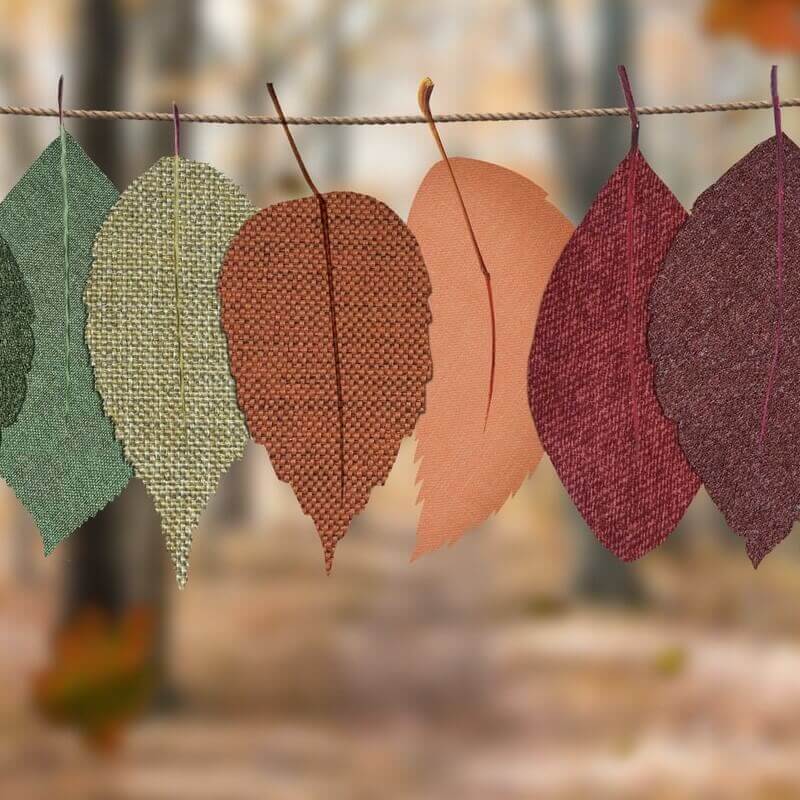Learn how sustainable fabrics can make your wardrobe eco-friendly
June 05, 2021“Unprecedented” has a whole new definition in 2020. This year has been rather eventful with swarms of locusts migrating to India, earthquakes, and cyclones causing mass destruction, all amidst a time when we are battling a novel pandemic. Everything we do has an impact on our environments, perhaps much larger than what we can notice. Hence, it is the need of the hour that we make conscious shifts in our lifestyles today for the greater good of our planet, so we can enjoy a greener tomorrow.
This World Environment Day let us all pause to reflect upon our actions and be mindful of our choices. And we can start with what we are wearing! The textile supply chain is a complicated, energy-intensive process, comprising many industrial processes that cause enormous consumption of water, land and water pollution due to excessive fertilizer use, and greenhouse gas emissions. As a result, the clothes we wear have a lasting impact on the environment, causing more harm than we can possibly imagine.
The antidote is to take charge and continuously explore sustainable alternatives. Fret not, embracing a sustainable lifestyle is not rocket science!

Understanding Eco-friendly Fabrics
These days sustainability is on everyone’s shopping radar, but to consciously choose eco-friendly fabrics, it is first important to understand the various types of fibres used in garment production. We have tried to break this down for you.
Natural Fibres
Simply put, natural fibres originate from an animal, plant, or mineral source. These include cotton, linen, hemp, silk, wool, juste, among others. While wearing natural fabrics may be good for your body, their environmental impact is tremendous. The production of a simple cotton t-shirt, for instance, takes about 2500 litres of water1. Moreover, the synthetic fertilizer and pesticide treatment involved in their production takes a toll on the environment.
Organic Fibres
A more sustainable alternative is organic fibres that are produced from crops grown in a controlled setting and harvested without the use of toxic or synthetic chemicals, thereby considerably alleviating the burden of pollution. However, production of organic fabrics is also relatively water-intensive and expensive.
Synthetic Fibres
Man-made fibres are those produced synthetically from petroleum (petrochemicals), natural gas, or coal that are processed to mimic natural fibres. Synthetic fibres commonly used in the apparel industry include polyester, spandex, and nylon. Many of these are hard to decompose and recycle, resulting in long-term land pollution.
Regenerated Cellulose Fibres
A third category that exists between natural and synthetic fibres is known as regenerated fibres, namely, rayon, viscose, and modal. While these are also man-made, these fabrics are derived from natural sources like plant-based renewable raw material. Wood pulp or cellulose are chemically dissolved and reconstructed as fibres. Production of viscose and rayon utilizes much less water and energy than that of non-organic cotton or synthetic fabrics.
Biodegradable Fibres
Biodegradable fibres are those that decompose back into nature’s cycle. By definition, then, all natural fibres are biodegradable unless they have been subjected to rigorous chemical treatment and processing (e.g., dying). Nature-based fibres viscose and rayon are also biodegradable and compostable in home and industrial conditions.
Recycled Fibres
Recycled fibres are those broken down from used textile to create a new fabric altogether; their production requires considerably low energy consumption. Up to 95% of textiles that are landfilled each year could be recycled2, which means recycled fabrics have immense potential and promise for the future of fashion.
Reclaimed Fibres
Reclaimed fibres are made from leftover fabric cuttings or textile that cannot be used in its original form. These fabrics are produced using a zero-waste manufacturing process, making them popular among eco-conscious consumers.
Building your Wardrobe with Pro-Planet Fabrics by LIVA
At Birla Cellulose, we endorse a circular economy model based on the principles of ‘Take, Make, and Recycle’. Our product portfolio includes a range of nature-based sustainable fabrics made from viscose staple fibre that give LIVA its beautiful drape, colour, and a natural sheen.
Livaeco™, our flagship product, is made of regenerated cellulose fibres (i.e., viscose) sourced from FSC® certified sustainable forests. This nature-based fabric is lightweight; extremely comfortable and breathable; and provides a soft, flattering drape.
Taking our commitment to eco-fashion to a new level, we introduced two new sustainable products: LIVA Reviva and Livaeco™ Modal. LIVA Reviva is a recycled variant comprising 80% wood pulp and 20% pre-consumer textile waste, giving the fabric a whole new life while being equal parts eco-friendly and fashionable. Livaeco™ Modal, on the other hand, offers an ultra-luxurious feel and lays soft on the skin.
The whole appeal of these lightweight fabrics stems from the fact that their manufacturing not only requires low water consumption but also thrives on conscious, sustainable practices. These nature-based fabrics have considerably low greenhouse gas emissions and biodegrade relatively fast, in about 6-8 weeks. What’s more, the production of these fabrics uses a Blockchain-based traceability system, helping you trace the journey of every Livaeco tagged garment back to its origin.
The bottom line: Once you understand the fundamentals of sustainable fashion, you will gather that building a sustainable wardrobe is easy but requires patience and grit. Start right where you are —follow our tips to upgrade your closet and continue to flaunt your sartorial choices, albeit more consciously.










